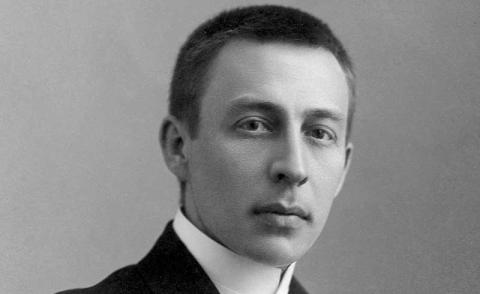You are here
Passionate and Energetic Symphonic Dances
Sergei Rachmaninoff (1873-1943) was born into a musical family in the rural village of Semyonovo. He studied piano and composition at the Moscow Conservatory, graduating in 1892. A famous composer and virtuosic pianist, he also spent several years conducting, becoming conductor of the Bolshoi Theatre in 1904. After the Russian Revolution, he and his family settled in New York in 1918.
Rachmaninoff was greatly influenced by two other famous Russian composers – Tchaikovsky and Rimsky-Korsakov. Tchaikovsky once met Rachmaninoff and was reported to have said about the teenager: “For him, I predict a great future.” Rachmaninoff’s compositional style is expressive and rich with orchestral colors. He summarized his compositional style this way: “What I try to do when writing down my music is to say simply and directly that which is in my heart when I am composing.”
Rachmaninoff didn’t immediately find success composing. His Symphony No. 1 was largely panned by critics in 1897. He composed very little for four years following this downturn as he battled depression. His skill, of course, ultimately prevailed and in 1901 he completed his very well-received Piano Concerto No. 2.
Symphonic Dances, his final composition, was completed in October 1940. The premier performance of the work was in January 1941 by the Philadelphia Orchestra. The piece was dedicated to the Philadelphia Orchestra and its director Eugene Ormandy. Rachmaninoff’s association with the orchestra dated back to 1909 when he made his American conducting debut there.
Symphonic Dances takes on many moods, including light, darting passages by string and wind players, a mysterious and eerie waltz, and even extracts from Russian Orthodox chants.
In keeping with his later compositional style, Rachmaninoff uses a wide range of instrumental tone colors. Richly expressive playing can be heard throughout the orchestra, including by a beautiful alto saxophone part early on. Textured, lush harmonies are in abundance throughout the work; some of which are characterized by Rachmaninoff’s distinctive melancholy style. In the outer movements of the piece, his signature Dies Irae theme, representing death, can be heard.
Symphonic Dances is full of energetic rhythmic sections. Quiet and serene passages are sometimes followed by sharply staccato chords, keeping listeners on the edge of their seats! The piece is anything but predictable. Building quickly in its final moments, you’re sure to be amazed by the impressively dramatic ending!
